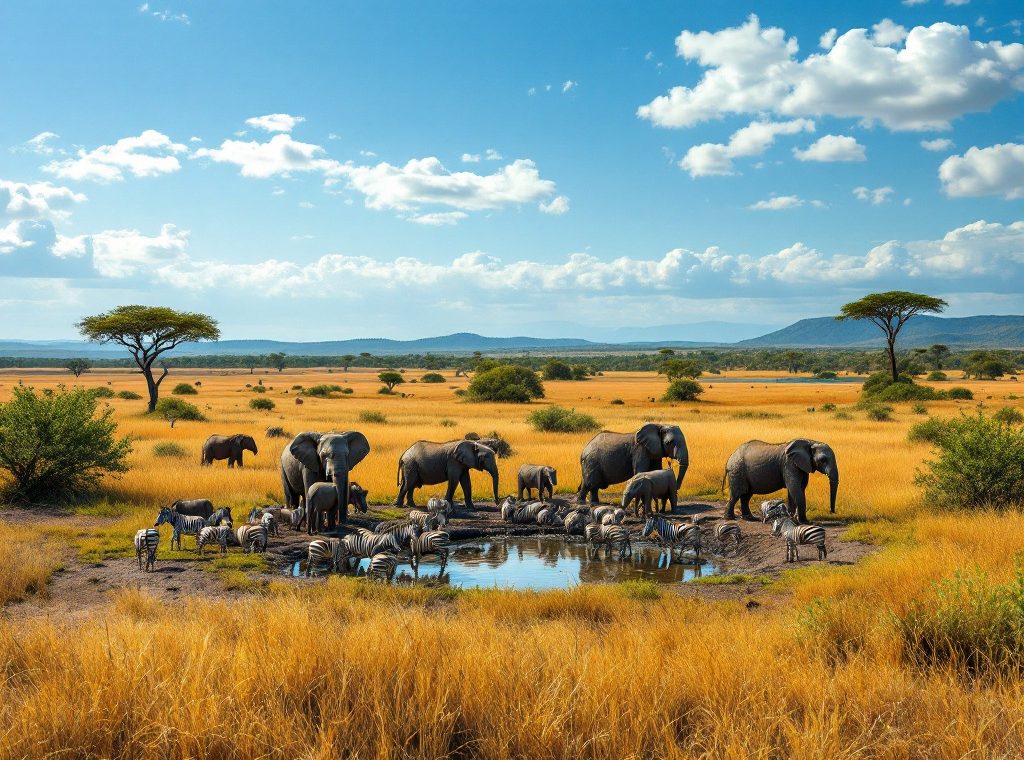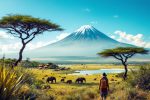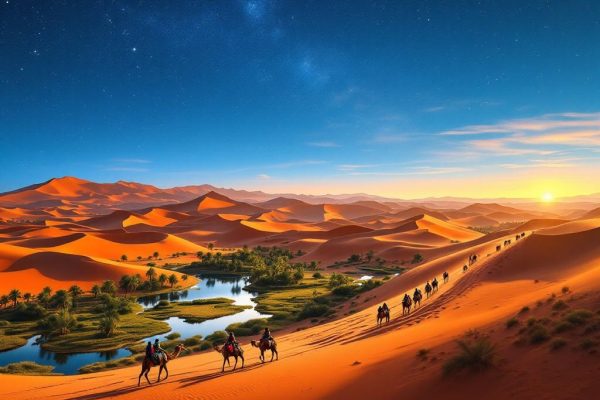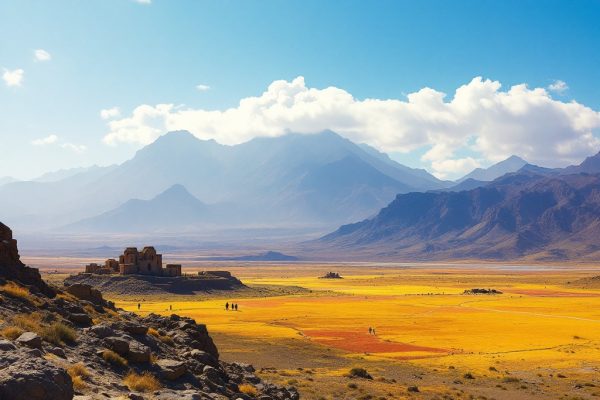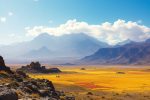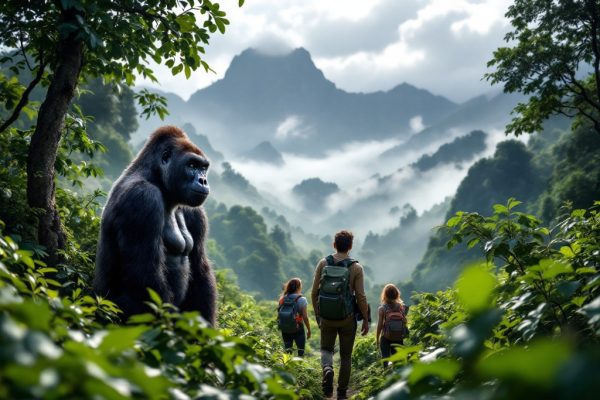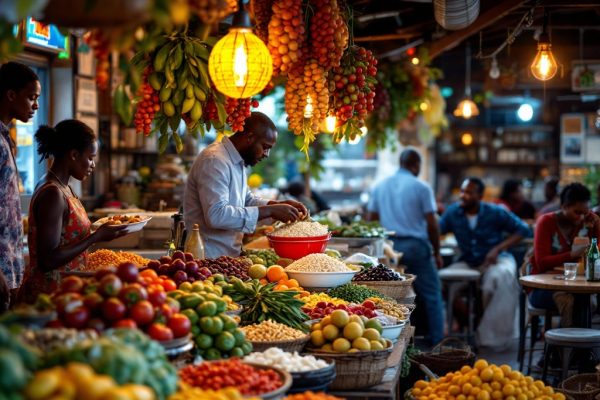Best Time of the Year to Travel to Africa
Dream of witnessing the Great Migration or exploring vibrant rainforests? Discover the best time to experience Africa’s diverse landscapes and wildlife! From September to December, dry season conditions offer prime safari opportunities, with animals congregating at water sources. This comprehensive guide explores optimal travel times for each region, whether you’re seeking thrilling safaris, tranquil beach getaways, or unique cultural experiences. Unveil the magic of Africa – start planning your unforgettable adventure today!
Important information
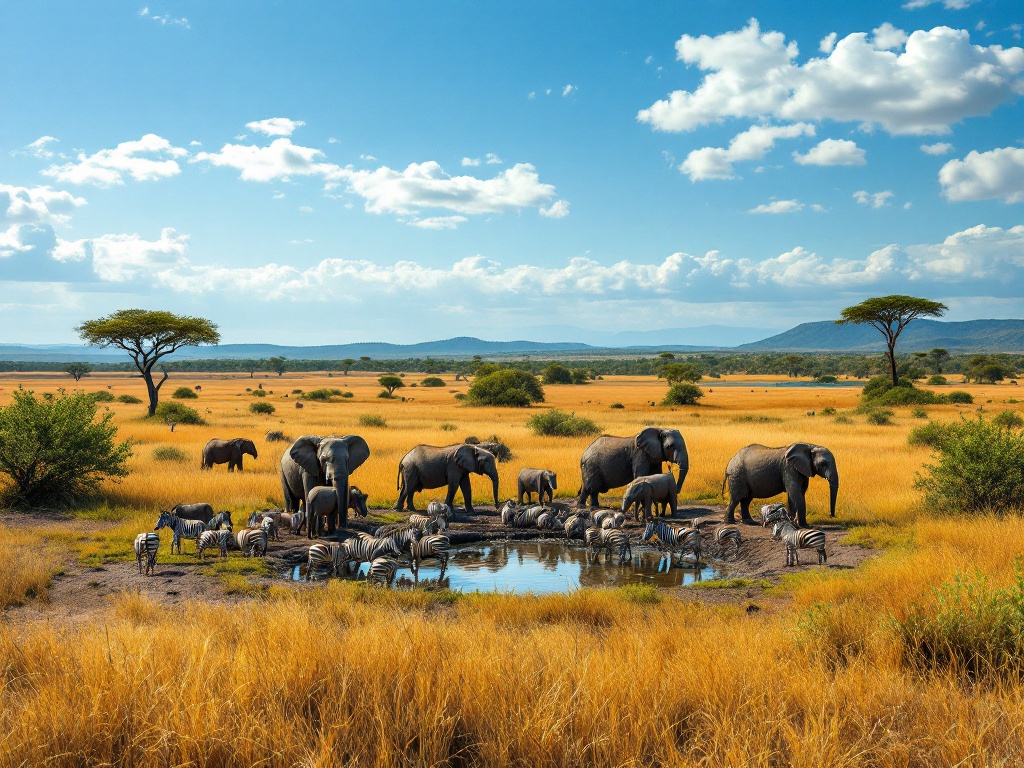
- September to December offers the best wildlife viewing due to the dry season, concentrating animals around water sources.
- Dry season (May-October in East/Southern Africa) means easier wildlife spotting, but also more tourists and higher prices. Book in advance.
- Rainy/green season (generally November-April) offers lush scenery, fewer crowds, and lower prices, but rain can disrupt travel.
- Whale watching peaks June-November along South Africa’s coast.
- Consider regional variations: East Africa’s Great Migration peaks July-October, while South Africa offers year-round game viewing in Kruger National Park.
Best Time of the Year to Travel to Africa
Plan your African safari between September and December for the best wildlife viewing experience. During the dry season, animals gather around water sources, making them easier to spot. The dry and comfortable weather is also perfect for exploring. Remember that Africa’s diverse regions have varying climates, so research your specific destination for the ideal time to visit.
Understanding Seasonal Variations
Dry Season
The dry season offers comfortable temperatures, ideal for game viewing. Animals gather at limited water sources, making sightings easier. Expect more tourists and dusty conditions.
- pleasant temperatures,
- easy wildlife viewing,
- more tourists and dust.
Rainy (Green) Season
Experience the vibrancy of lush vegetation and newborn animals during the rainy season. Be prepared for potential road closures due to rain and high humidity.
- lush vegetation,
- newborn animals,
- possible road closures and humidity.
Each season provides a unique African experience, so plan your trip based on your preferences.
Factors Affecting Travel Timing
Planning your African adventure depends on the timing. Witnessing the Great Migration’s spectacular herds requires precise planning, as do optimal whale watching seasons. The climate significantly influences your experience. Dry seasons offer unparalleled wildlife viewing, while the rainy season transforms the landscape into a vibrant paradise. Choosing between East and Southern Africa further refines your travel window, each boasting unique ideal times. Your personal preferences, whether beach holidays, gorilla trekking, or cultural immersion, will determine the perfect dates for your unforgettable African journey.
Wildlife Viewing
Dry seasons are ideal for unparalleled wildlife viewing. Animals gather around water sources, making them easier to spot.
Whale Watching
Plan your trip around the optimal whale watching seasons for a chance to witness these majestic creatures.
East vs. Southern Africa
East and Southern Africa have unique ideal travel times. Research the best time to visit based on your chosen region.
Personal Preferences
Consider your interests, whether beach holidays, gorilla trekking, or cultural immersion, to determine the perfect dates for your trip.
Climate and Weather Patterns
East Africa experiences two distinct rainy periods: a longer one from March to May and a shorter one from October to December.
Southern Africa has a single wet season spanning November to March, followed by a dry season from April to October.
North Africa presents a contrasting picture with its predominantly hot, arid climate, though coastal regions enjoy milder temperatures.
West Africa, the rainy season stretches from May to October, while the dry season runs from November to April.
Central Africa stands apart with its year-round humidity and rainfall, punctuated by a slightly drier period from June to September.
These varied climates significantly impact travel, influencing the ideal times for activities like wildlife viewing or beach vacations.
Dry Season: Cooler Weather and Easier Wildlife Spotting
Experience Africa’s cooler dry season, a prime time for wildlife viewing. With sparse vegetation, animals congregate at waterholes, offering exceptional viewing opportunities. This makes it an ideal period for safaris, with easily navigable roads and increased animal activity. Witness fascinating behaviors. Remember that this popular season requires booking accommodations in advance.
Rainy Season: Green Season Benefits and Considerations
Advantages of Green Season
- Lush green landscapes create stunning photo opportunities and a birdwatcher’s paradise.
- Lower prices and fewer tourists.
Disadvantages of Green Season
- Potential for heavy rainfall, which can disrupt travel itineraries and occasionally make certain areas inaccessible.
- Dense vegetation can pose a challenge for wildlife viewing.
Ideal Months for Visiting Africa
East and Southern Africa are ideal for wildlife viewing during their dry season, from May to October. Animals gather at watering holes, making them easy to spot, and the sparse vegetation improves visibility. Comfortable temperatures and clear skies enhance the experience.
South Africa’s coasts become a whale watcher’s paradise from June to November. Southern right whales come to breed and calve, with peak sightings from July to October. You can observe various whale species throughout these months.
For exceptional safaris, including the Great Migration’s peak in September and October, consider visiting East and Southern Africa from September to December. The dry weather and comfortable temperatures create ideal wildlife viewing conditions.
May to October: Popular Months in East and Southern Africa
East and Southern Africa’s dry season, from May to October, is the best time to see wildlife. Animals gather at waterholes, making them easy to spot, and the cooler temperatures are ideal for outdoor activities. Thinner vegetation improves visibility, making this period popular for safaris.
Because of its popularity, booking accommodations and tours well in advance is crucial, especially for popular parks and reserves. Early planning ensures the best possible safari experience.
September to December: Ideal Conditions for Safari Trips and Animal Migrations
Experience Southern Africa, a safari paradise, from September to December. This peak season offers dry, comfortable weather, incredible animal migrations, and the chance to see newborn animals. Exceptional wildlife viewing is practically guaranteed as animals congregate at waterholes. Prepare for an unforgettable experience.
June to November: Whale Watching Opportunities
South Africa’s winter months, from June to November, mark the peak season for whale watching. During this period, Southern Right Whales migrate to the South African coast, making Hermanus an exceptional location for observing them from land. This incredible spectacle lasts through November, providing a memorable experience for those seeking to witness these majestic creatures.
Best Time for an African Safari
Experience Africa’s stunning wildlife from May to September during the dry season, the prime time for safaris. Animals gather around scarce water sources, making them easier to spot amidst the thinner vegetation. Enjoy sunny days and cooler evenings.
For a truly unique spectacle, witness the Great Migration in September and October. Millions of wildebeest, zebra, and other animals journey through Kenya’s Masai Mara, offering an unparalleled wildlife viewing opportunity.
From late May to November, explore Zambia’s bush on foot with a walking safari. The dry season provides ideal trekking conditions for an up-close wilderness experience, learning about animal tracking and a different kind of safari adventure.
May to September: Optimal Safari Conditions in the Dry Season
The dry season, from May to September, offers ideal safari conditions. Animals gather at shrinking waterholes, creating exceptional viewing opportunities. Cooler temperatures enhance visitor comfort.
- prime safari conditions,
- exceptional viewing opportunities,
- enhanced visitor comfort.
Clear skies make for stunning photographic moments. However, this popular season requires advance booking, ideally several months in advance, to secure your spot. Book your safari several months in advance to avoid disappointment.
- stunning photographic moments,
- advance booking is essential.
The Great Migration: Witnessing the Phenomenon in September and October
Witness the Great Migration in East Africa during September and October. Millions of wildebeest, zebras, and other ungulates journey across the Serengeti and Maasai Mara. The dry season offers exceptional viewing opportunities. Animals gather near water sources in the dry grasslands, making them easy to spot. Comfortable temperatures are ideal for walking safaris. Sparse vegetation provides clear views, but be prepared for dusty conditions. A scarf or mask is recommended. It’s a breathtaking spectacle.
Great Migration Viewing
The dry grasslands offer unparalleled viewing as animals congregate near water sources.
Comfortable Temperatures
Enjoy pleasant weather ideal for walking safaris during the dry season.
Clear Visibility
Sparse vegetation provides unobstructed views of the wildlife.
Dust Protection
Be prepared for dusty conditions and consider bringing a scarf or mask.
Walking Safaris in Zambia: Late May to November
Zambia’s dry season, from late May to November, offers ideal conditions for walking safaris. The thinner foliage improves visibility, and animals gather at watering holes, making them easier to observe. The dry ground ensures comfortable trekking for a truly immersive wildlife experience.
Regional Considerations for Travel
Experience the awe-inspiring Great Migration in East Africa between July and October, journeying through the captivating landscapes of Kenya and Tanzania. While wildlife viewing is remarkable year-round, the dry season, from June to October, provides exceptional opportunities to witness animals gathering at water sources.
Southern Africa presents a unique wildlife viewing experience during its dry winter months, spanning from May to October. Prime locations such as Botswana, Zambia, and Zimbabwe offer incredible sightings, thanks to reduced vegetation that improves visibility.
South Africa boasts diverse attractions.
- Cape Town thrives in the summer months, from October to April, presenting ideal weather for exploring the city and its surrounding areas.
- Kruger National Park attracts safari enthusiasts with year-round game viewing.
- While the dry season (May to September) remains a favorite, each season reveals its own unique charm, from the vibrant landscapes of the wet season to the birth of new animals.
East Africa: Timing for the Great Migration and Wildlife Viewing
Embark on an East African safari during the dry season, spanning from June to October, to witness breathtaking wildlife, including the Great Migration.
The scarcity of water and vegetation during this period leads to predictable animal gatherings, enhancing wildlife viewing opportunities.
For the dramatic Mara River crossings of the Great Migration, the optimal viewing period is from July through October.
Plan your safari adventure during these months for an unforgettable experience.
Southern Africa: Wildlife Viewing and Climate
Experience Southern Africa’s wildlife at its finest during the dry winter months, from May to October. Animals gather at waterholes, offering incredible viewing opportunities, and the cooler temperatures enhance game drives. While this popular season attracts more tourists, planning ahead guarantees a rewarding trip. For a truly immersive experience, consider guided bush walks, providing a unique perspective on the landscape and its inhabitants.
South Africa: Sightseeing and Safari Experiences
The best time for sightseeing in South Africa is from September to April.
For the ideal safari adventure, visit between May and September.
Special Travel Experiences in Africa
Planning your African adventure? Here’s a guide to help you choose the best time to visit:
Beach Getaways
- Cape Town: Ideal beach weather from November to March.
- Mauritius: Perfect beach conditions from April to June and September to December.
- Zanzibar: Pristine beaches from June through October.
Gorilla Trekking
Trekking is possible year-round, but drier trails are ideal.
- Dry Season 1: June to September.
- Dry Season 2: December to February.
Africa also hosts vibrant cultural festivals, many coinciding with the dry seasons. Research specific events of interest to align your trip accordingly.
Beach Holidays: Best Months for Coastal Relaxation
| Destination | Best Time to Visit |
|---|---|
| Mauritius | September to December |
| Seychelles | May to October |
| Mombasa | January through March |
| Zanzibar | June to March |
| Cape Town | November to March |
Gorilla Trekking: When to Visit for the Best Experience
Plan your gorilla trekking adventure during the dry seasons for the best experience. These periods, typically from June to September and December to February, offer ideal rainforest access in Uganda and Rwanda. The reduced rainfall during these times creates more favorable trekking conditions, maximizing wildlife viewing opportunities. However, it’s always recommended to confirm specific conditions with your tour operator before your trip.
Cultural Experiences: Timing Your Visit for Festivals and Traditions
African festivals and traditions offer a vibrant glimpse into the continent’s diverse cultures. These celebrations, held throughout the year, vary widely in date and theme. Some examples include harvest festivals in June and historical commemorations in December. Careful research is crucial to experiencing these unique events. Planning your trip around a specific festival not only guarantees you’ll witness the festivities, but also allows for a deeper understanding of their cultural significance. Explore local customs and discover traditions to make your African journey truly memorable.
Travel Tips and Itinerary Planning
Planning Your African Adventure: Tourist Seasons
Peak Season: ideal weather, unparalleled wildlife viewing, higher prices and more crowds.
Low Season: more intimate and affordable experience, possible weather disruptions.
School Holiday Travel
Book accommodations and tours in advance due to high demand. This ensures a smoother trip.
Managing Tourist Seasons: High vs. Low Season
High Season
Experience peak wildlife viewing opportunities, but be aware of potential crowds and increased prices.
Low Season
Enjoy a more tranquil experience with fewer tourists and lower costs, though weather conditions may occasionally limit activities.
Considerations for School Holidays and Family Travel
Planning family trips during school holidays requires careful preparation due to increased prices and limited availability. Book your flights and accommodations well in advance to secure the best deals and preferred options. When selecting a destination, focus on family-friendly locations offering kid-oriented activities and reliable infrastructure. Resorts and lodges often provide amenities such as kids’ clubs, babysitting services, and age-appropriate excursions.
Resorts and Lodges
These accommodations cater specifically to families, often featuring:
- Kids’ clubs with supervised activities,
- Babysitting services for parents’ evenings,
- Age-appropriate excursions and entertainment.
National Parks
For adventurous families, national parks offer a thrilling experience. However, pre-trip research is crucial:
- Check for age restrictions on specific activities,
- Understand and take necessary health precautions, including malaria prevention and vaccinations,
- Pack appropriate clothing for varied weather conditions.
Discuss wildlife safety and cultural respect with your children before embarking on the trip.

